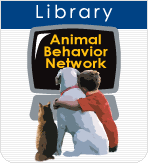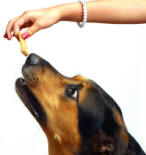|
Need Help? |
|
Call
1-800-372-3706 |
|
Contact Us
Members Menu
|
|

 |
|
Help
is at your
fingertips by library, email, and phone. |

%20(WinCE).jpg)
PUPSICLE -
is a
toy stuffed with frozen canned pet food
with a "tasty fuse" to get pets started

|
- Offering Behavior Medicine -
|
|
Behavior
Cases Commonly Used Terms
Primary Concern
-
The behavior observed by the pet parent designated as the most
important concern.
Secondary
Concerns -
Behavior s observed by the owners that they wish modified
occurring during the same time period as the primary concern
Detailed Concern History - A
predetermined set of online questions presented to the pet
parent for the purpose of determining one or more behavioral
profiles.
Behavioral Profile - A
behavioral finding or diagnosis determined by a veterinary
behavior consultant intended to explain a motivation for an
unwanted pet behavior. A pet behavior may have multiple profiles
and multiple profiles may be applied to one pet behavior.
Extinction Burst
--
When a pet has
learned a behavior and been rewarded for that behavior in the
past, and then that behavior no longer works (produces the
expected effect or outcome), the pet often intensifies the
behavior in an effort to get the expected result. We call
this an extinction burst. Be prepared for behaviors to
get worse before they get better.
Triggers
-- are
anything you can identify that causes the pet to show
unwanted behaviors. Use the behavioral diary for quick notes on
how the pet is responding to each step of this behavior modification program.
All episodes of unwanted behavior should be
noted.
Markers
--
pets tell us with their body language how they are reacting or
responding to a "Trigger". For example, when the dog sees a cat,
it's eyes dilate, lip curls up, teeth are bared, ears come
forward, fur on the back and tail goes up - all signs of
impending aggression. You will learn how to better
identify anxiety, agitation, aggression, relaxation, contentment
by reading the pets body language
Mass Effect -- To help
you get faster results, a key strategy in the pet's behavioral
treatment plan is to "throw the book" at the problem and cover
all possible bases that may help to improve the behavior.
This includes using medications with behavior modification
plus
manipulating the environment.
Plateau Stage
--
The "Plateau" stage or phase is
when ALL strategies have been implemented for enough time
to achieve a "successful outcome." The Plateau
Stage is not completed until the pet has shown no signs of
the problem behavior for double the amount of time that
occurred between episodes prior to treatment. It's important
to CONTINUE the "mass effect"' after
the problem is under control
to MAINTAIN
progress and evaluate any possibility
of relapse before changing any of the treatment variables. THEN,
the pet parent may choose one thing to remove
at a time (limited variables) to see if progress can be
maintained.
The Duration
of this
plateau period is determined
by the original frequency of the problem, and the difficulty
in achieving the successful outcome.
Successful Outcome
--
is defined differently for each case,
based on the Pet Behavior History Analysis. It is up to the pet owners
and Veterinary Behavior Consultants to define what is
acceptable. The higher the bar for the definition, the
lower the % prognosis. If the client's expectations are
not reasonable, then Case Supervision of a behavioral
treatment plan may not be offered.
For example
- in Feline Housesoiling, if the beginning frequency is
2-3x per day, then the "Successful Outcome" might be
defined as, "No more than 3 episodes per month averaged
over 3 or more months". This might carry a 80% prognosis
whereas "1 accident per month or less," might have a 40%
prognosis and, "No further accidents" during the
behavioral treatment period becomes grounds to not
accept the case due to unrealistic expectations.
|
|
|